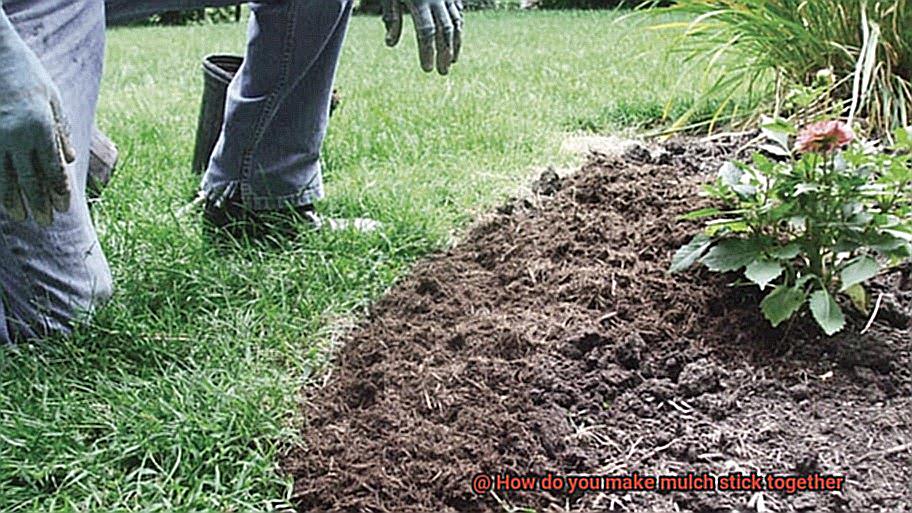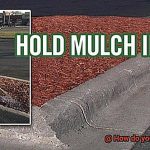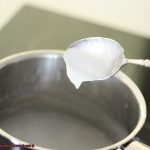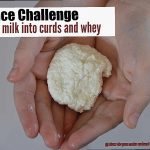Picture this: a garden so stunning, it stops passersby in their tracks. A landscape so lush and vibrant, it’s the envy of the neighborhood. What’s the secret ingredient? Mulch. Yes, you heard that right – mulch. It’s not just about picking pretty flowers and plants; it’s about creating a sustainable haven for your outdoor space.
Mulch is like a superhero for your garden. It saves water, fights off pesky weeds, and nourishes the soil. But here’s the catch – getting that mulch to actually stay put can be a bit of a challenge.
Don’t worry though, because we’ve got you covered. In this blog post, we’re going to spill the beans on how to make mulch stick together like glue. Whether you’re an experienced green thumb or just starting out on your landscaping journey, we’ve got practical tips and tricks that will take your game to the next level.
Join us as we explore the wonderful world of cohesive mulch placement. We’ll uncover ancient techniques passed down through generations and reveal cutting-edge products that will revolutionize your gardening experience. This isn’t just about looks – it’s about creating a sustainable landscape that Mother Nature would be proud of.
So get ready to dive into the magical realm of mulch and discover the secrets that will transform your outdoor space into a paradise of beauty and environmental stewardship. Are you excited? We sure are. Let’s get started.
What is Mulch?
Contents
- 1 What is Mulch?
- 2 Benefits of Making Mulch Stick Together
- 3 Using Mulch Adhesives
- 4 Using Organic Materials to Make Mulch Stick Together
- 5 Using Straw or Hay to Make Mulch Stick Together
- 6 Using Natural Substances as a Homemade Mulch Adhesive
- 7 Best Practices When Applying Adhesives and Organic Materials
- 8 Pros and Cons of Different Methods for Making Mulch Stick Together
- 9 Conclusion
Mulch, a versatile material, holds significant importance in the world of gardening and landscaping. Acting as a protective layer, it offers a range of benefits that enhance the health and beauty of plants. In this article, we will delve into the diverse purposes of mulch and its crucial role in creating thriving gardens and landscapes.
Weed Suppression:
Mulch’s primary function lies in controlling weeds. By blocking sunlight and preventing weed seeds from germinating, mulch significantly reduces weed growth, minimizing the need for manual weeding. This allows plants to thrive by receiving ample nutrients and water without competing with unwanted vegetation.
Moisture Retention:
Like a natural water reservoir, mulch reduces water evaporation from the soil surface. By retaining moisture, it helps plants withstand drought conditions and reduces the frequency of watering. This benefit proves particularly useful in regions with limited water resources or during dry spells.
Temperature Regulation:
During scorching summer months, mulch acts as a shield, keeping the soil cool and protecting plant roots from excessive heat. In colder seasons, it provides insulation, safeguarding roots from freezing temperatures. This temperature regulation ensures optimal growing conditions for plants throughout the year.
Soil Fertility Enhancement:
Organic mulches gradually decompose over time, enriching the soil with valuable nutrients. As they break down, they release organic matter that improves soil structure and fertility. This fosters healthy root development, encourages beneficial microorganisms, and enhances overall plant growth.
Erosion Prevention:
Mulch acts as a protective barrier against erosion caused by heavy rainfall or wind. It absorbs and disperses rainwater, reducing its impact on bare soil surfaces. This feature proves especially important on slopes or areas prone to erosion.
Aesthetic Appeal:
Beyond its functional benefits, mulch enhances the visual appeal of gardens and landscapes. It provides a uniform appearance to planting beds, imparting a neat and well-maintained look. Acting as a backdrop, mulch highlights the vibrant colors of flowers and foliage, making your garden more visually appealing.
Benefits of Making Mulch Stick Together
Imagine a garden filled with vibrant flowers and lush green plants, all thriving in perfect harmony. The secret behind this picturesque scene? It’s mulch. But not just any mulch – mulch that sticks together. In this article, we’ll uncover the benefits of making mulch stick together and how it can transform your garden into a paradise.
Improved Moisture Retention:
When mulch sticks together, it forms a protective layer over the soil, acting as a shield against water evaporation. This means less time spent watering your plants and more time enjoying your garden. The sticky mulch locks in moisture, ensuring that your plants stay adequately hydrated even during dry spells. Plus, it prevents water runoff during heavy rainfall, allowing the soil to absorb water more effectively.
Enhanced Weed Control:
Weeds – the arch-nemesis of every gardener. But fear not. Mulch that sticks together creates a dense barrier that keeps those pesky weeds at bay. By depriving them of sunlight and essential nutrients, the sticky mulch inhibits weed germination and growth. Say goodbye to endless weeding sessions and hello to a weed-free garden.
Temperature Regulation:
Mulch acts as nature’s thermostat, keeping soil temperatures in check. When mulch sticks together, it provides better coverage and insulation, protecting plant roots from extreme temperature fluctuations. In scorching summer heat, it keeps the soil cool, while in colder seasons, it prevents frost damage. With stable soil temperatures, your plants can thrive year-round.
Soil Erosion Prevention:
Wind and water can wreak havoc on your garden by eroding valuable topsoil. But don’t worry – sticky mulch to the rescue. It creates a physical barrier that shields the soil surface from raindrops and strong winds. By reducing erosion, mulch ensures that your soil stays intact, preserving its fertility and preventing nutrient loss.
Organic Matter Enrichment:
As mulch breaks down over time, it adds a dose of organic matter to the soil – a true elixir for plant growth. When mulch sticks together, it decomposes gradually, releasing nutrients into the soil. This enriches the soil’s structure, improves nutrient retention, and encourages beneficial microbial activity. Your plants will thank you for the nutritious feast.
Increased Aesthetic Appeal:
Last but not least, let’s talk about the visual impact of sticky mulch. When it remains in place, it creates a cohesive layer that looks neat and uniform. The well-maintained appearance instantly enhances the overall aesthetics of your garden or landscape. Transform your outdoor space into a stunning retreat that will leave your neighbors green with envy.
Using Mulch Adhesives
It’s time to unlock the secrets to a picturesque garden by using mulch adhesives. These handy products are specifically designed to help mulch stick together, providing stability and longevity to your outdoor oasis.
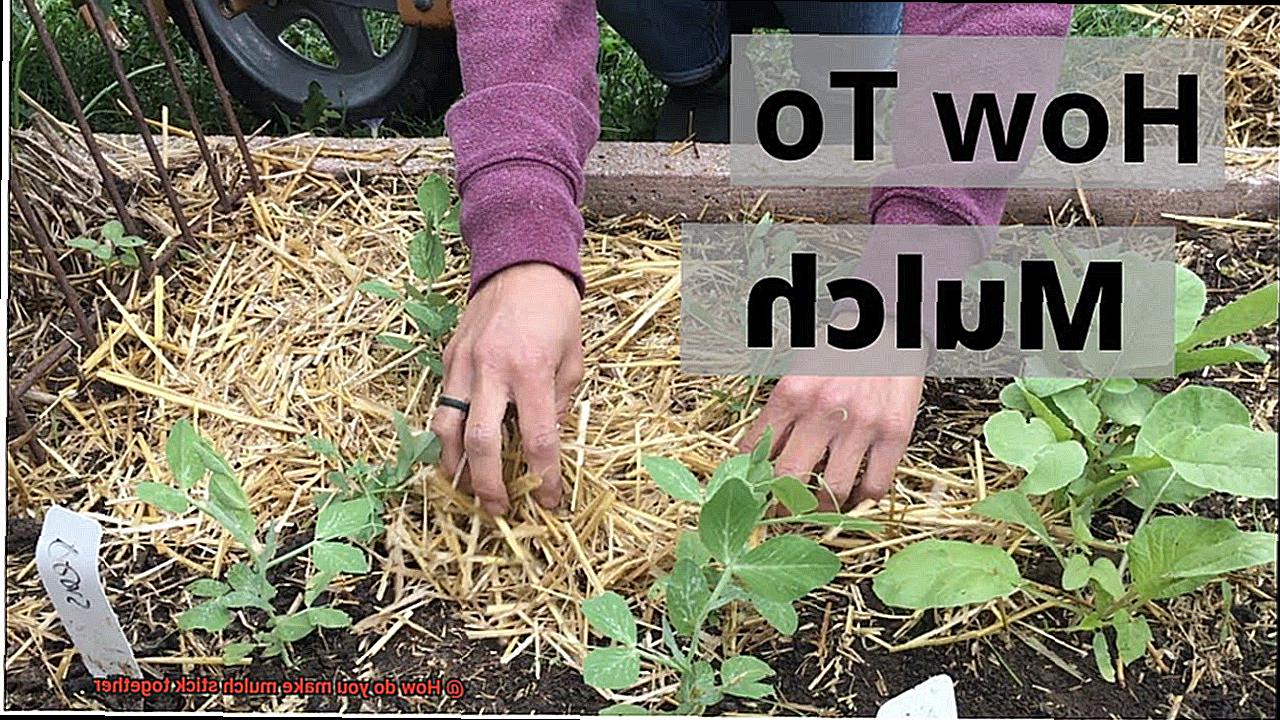
The Benefits of Mulch Adhesives:
- Retaining Moisture: Mulch adhesives create a protective shield that prevents water evaporation, keeping your plants hydrated for longer periods. This is especially beneficial in dry climates or during hot summer months.
- Weed Control: Mulch adhesives inhibit weed growth by creating a barrier on the soil surface. This reduces the need for constant weeding, saving you time and effort.
- Temperature Regulation: Mulch adhesives act as insulation for the soil, regulating its temperature and protecting plant roots from extreme heat or cold. This helps maintain healthy plant growth throughout the year.
- Soil Erosion Prevention: By sticking mulch particles together, these adhesives effectively prevent soil erosion caused by heavy rain or wind. Your garden beds will remain intact and protected, preserving the integrity of your landscape design.
- Enriching Soil Quality: As mulch breaks down over time, it enriches the soil with organic matter, improving its structure and fertility. Mulch adhesives help retain this organic matter in place, ensuring a continuous supply of nutrients for your plants.
- Aesthetic Appeal: Mulch adhesives enhance the overall aesthetic appeal of your garden by keeping mulch neatly in place. Say goodbye to scattered mulch and hello to a well-maintained and visually pleasing landscape.
Types of Mulch Adhesives:
- Guar Gum-Based Adhesives: Derived from the seeds of the guar plant, guar gum-based adhesives form a sticky gel-like substance when applied to mulch. They dry clear, remain flexible, and allow for natural movement of the mulch while providing stability.
- Cellulose Fiber-Based Adhesives: Made from recycled paper or cellulose fibers, these adhesives come in powder form and need to be mixed with water before application. Once dried, they create a strong bond between the mulch particles, even in windy conditions.
Application Process:
- Choose the Right Product: Select a mulch adhesive that suits your specific needs. Guar gum-based adhesives and cellulose fiber-based adhesives are popular options, each offering unique advantages.
- Read the Instructions: Follow the manufacturer’s instructions carefully to ensure correct application. Different products may require specific mixing ratios or application methods, so be sure to read and understand the recommended guidelines.
- Favorable Weather Conditions: Apply mulch adhesives on a dry day with minimal wind. This allows the adhesive to dry and set properly without being washed away or blown off.
Using Organic Materials to Make Mulch Stick Together
Say goodbye to the frustrations of loose mulch and discover the secret to making it stick together like magic. Best of all, this solution is all-natural, environmentally friendly, and will have your garden thriving.
Mulch serves as a vital protective layer, shielding your soil from the elements, conserving moisture, and suppressing relentless weeds. But without proper adhesion, its benefits can be short-lived. Enter organic materials, the superheroes of mulch adhesion.
First on our list of mulch adhesion powerhouses are compost and aged manure. These moisture-rich wonders bind mulch particles together, creating a solid layer that defies movement. Mix them with your mulch, and presto. Your mulch will stay put, ensuring optimal soil protection.
For those seeking an even stickier solution, honey or molasses are your go-to options. These natural glues can be mixed with water and sprayed onto the mulch, creating an irresistible stickiness that defies even the strongest gusts of wind. Imagine the sweet aroma wafting through your garden as your mulch stays firmly in place.
But hold on, we’re not done yet. If homemade remedies aren’t your cup of tea, fear not. Organic binders tailored specifically for making mulch stick together are readily available in the market. These plant-based marvels offer long-lasting protection and a hassle-free experience for all gardening enthusiasts.
Before you embark on your adhesive adventure, remember to choose a day with favorable weather conditions – not too hot or windy – to give your adhesive enough time to work its magic and prevent any wastage.
So whether you’re a seasoned green thumb or just starting out, using organic materials as mulch adhesives is the way to go. It’s environmentally friendly, harmless to plants, animals, and the soil, and guarantees a garden that will make your neighbors green with envy.
Using Straw or Hay to Make Mulch Stick Together
There is a secret weapon at your disposal – straw or hay. These unassuming materials possess the power to transform your mulch into an unstoppable force, keeping it firmly in place and protecting your garden. In this article, we will delve into the secrets of using straw or hay as a mulch adhesive. Get ready to harness the power of nature and create a garden that will leave your neighbors green with envy.
Spread and Dampen: The First Steps to Success
To begin, evenly spread your desired mulch over the designated area. Whether it be compost, aged manure, or another organic material, ensure it covers the ground uniformly. Once this is done, lightly moisten the mulch, making it damp but not soaked. This crucial step activates the adhesive powers of straw or hay.
The Binding Agent: Unleashing the Power of Nature
Now comes the exciting part – introducing straw or hay as a binding agent. Take handfuls and gently spread a thin layer over the damp mulch. Visualize it as your garden’s very own glue. As the straw or hay decomposes naturally, it will intertwine with the mulch, forming a strong bond that prevents it from being blown away or washed out.
Choose Wisely: Selecting the Right Materials
Not all straw or hay varieties are created equal when it comes to mulch adhesion. Avoid using those that contain weed seeds, as this could lead to unwanted green invaders in your garden. Additionally, ensure that the straw or hay you choose is free from any herbicides or pesticides that may harm your plants and soil.
Moisture Check: Maintaining Optimal Conditions
Regularly monitor moisture levels in your garden. If the mulch becomes too dry, its adhesive powers may weaken, resulting in loose mulch. Keep a close eye on rainfall and watering to maintain an ideal level of moisture. Remember, a well-hydrated garden is a happy garden.
Extra Protection: Battling the Elements
In areas with heavy rainfall or strong winds, an extra layer of straw or hay may be necessary to ensure your mulch stays put. Do not hesitate to add a thicker layer for added protection. Think of it as donning your mulch with superhero armor.
Replenish and Renew: Sustaining the Power
While straw and hay are fantastic natural materials, they do have a lifespan. Over time, they will break down and lose their adhesive properties. To maintain the effectiveness of your mulch adhesive, periodically replenish the straw or hay layer. This will ensure your garden remains protected and nourished.
Using Natural Substances as a Homemade Mulch Adhesive
In this post, we will explore the potential benefits and limitations of using natural substances as a homemade mulch adhesive. Get ready to discover the secret weapon that will keep your garden looking picture-perfect all year round.
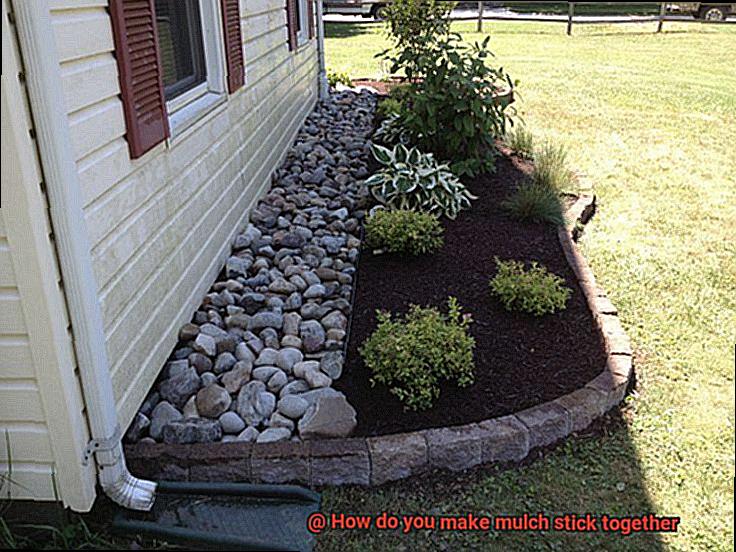
Benefits of Using Natural Substances as Mulch Adhesives:
- Cost-effective: Natural substances such as egg whites, cornstarch, pine resin, or compost tea are affordable alternatives to commercial mulch adhesives. They are readily available at a fraction of the cost, helping you save money while maintaining a beautiful garden.
- Environmentally friendly: Homemade mulch adhesives are an eco-conscious choice. They are free from harmful chemicals, reducing your carbon footprint and promoting a healthy environment for your plants and soil.
- Versatility: The use of natural substances offers a range of options to suit various preferences and needs. Whether you opt for protein-packed egg whites, powdery cornstarch, sticky pine resin, or nutrient-rich compost tea, there is a natural solution for everyone.
Limitations of Homemade Mulch Adhesives:
- Durability: While natural substances can provide a decent bond, it’s important to note that they may not offer the same level of durability as commercial mulch adhesives. Factors like heavy rainfall or strong winds can affect their effectiveness over time, requiring periodic touch-ups.
- Trial and error: Homemade mulch adhesives require some experimentation to find the right formula and application method that works best for your specific garden conditions. It’s recommended to test small areas before applying them to larger mulch areas.
- Maintenance: Depending on weather conditions and the decomposition of organic matter, natural substances may need periodic replenishment to maintain their effectiveness. Regular touch-ups may be necessary to ensure optimal mulch adhesion.
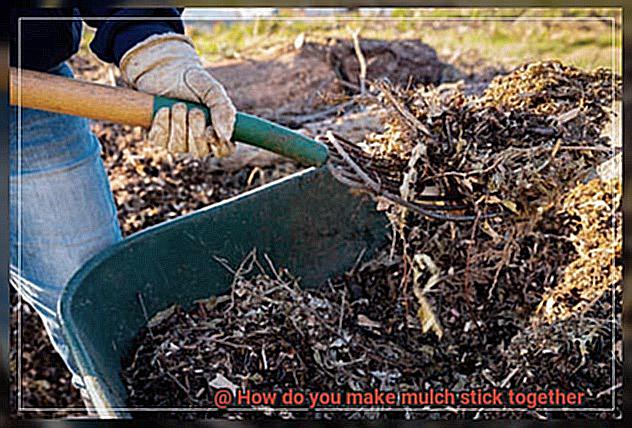
Best Practices When Applying Adhesives and Organic Materials
If you’re a green thumb looking to create a stunning garden masterpiece, then you’ve come to the right place. In this blog post, we’ll explore the best practices for applying adhesives and organic materials to create mulch that sticks together like glue. Whether you’re a seasoned gardener or just starting out, these tips will help you unleash the power of nature in your garden while protecting the environment.
Choose the Right Adhesive:
To ensure a long-lasting bond, it’s essential to choose an adhesive specifically designed for outdoor use. Look for labels that mention weather resistance and UV protection. This way, your mulch will stay intact despite exposure to rain, sunlight, and temperature fluctuations.
Prepare the Surface:
Just like a painter primes a canvas, preparing the surface is crucial for successful adhesion. Clear away any debris, weeds, or loose mulch from the area. Ensure that the surface is clean, dry, and free from contaminants that could hinder adhesion.
Apply Adhesive Evenly:
Consistency is key when it comes to applying adhesive. Use a brush or sprayer to distribute it evenly across the surface. Avoid going overboard with the adhesive, as excessive amounts can create clumps or a sticky mess.
Timing is Everything:
Timing plays a vital role in achieving optimal adhesion. Follow the instructions provided by the adhesive manufacturer regarding curing time and temperature requirements. Avoid application on extremely hot or cold days, as it can impact performance.
Embrace Organic Binders:
For those looking for an eco-friendly alternative, organic binders are worth exploring. Made from biodegradable materials like cornstarch or vegetable oils, they provide a sustainable option for making mulch stick together.
Test Before Application:
Before diving into a full-scale application, it’s best to conduct a small test patch. Apply the adhesive or organic binder to a small area of your mulch and observe its adhesion strength and compatibility. This way, you can ensure that the product works effectively with your specific type of mulch.
Maintain and Reapply:
Nature is ever-changing, and so is your mulch. Regularly inspect the surface and reapply adhesive as needed to maintain cohesion. This will ensure a long-lasting and visually appealing result.
Pros and Cons of Different Methods for Making Mulch Stick Together
Many gardeners struggle with keeping their mulch in place, especially in areas with heavy rainfall or strong winds. Luckily, there are several methods you can use to make your mulch stick together and stay put. In this blog post, we’ll explore the pros and cons of three popular methods: glue, natural adhesives, and mechanical means.
Let’s start with glue. Glue is a readily available option that is easy to use. You can apply it directly to the mulch or spray it onto it. One of the biggest advantages of using glue is that it provides a strong bond, ensuring that your mulch stays in place even during the harshest weather conditions.
There are different types of glue available, such as wood glue or adhesive sprays, which you can choose based on your specific needs. However, it’s important to note that some glues may contain chemicals that could be harmful to plants or the environment.
To avoid this issue, make sure to use eco-friendly glues specifically designed for gardening purposes. Additionally, if you practice organic gardening, glue may not be a suitable option as it introduces synthetic materials into the soil. Over time, glue may degrade due to exposure to sunlight and moisture, causing your mulch to come loose.
If you’re looking for a more natural alternative, consider using natural adhesives like cornstarch paste or homemade gelatin. These adhesives are safe for plants and do not introduce harmful chemicals into the soil.
They also break down over time, allowing for better nutrient absorption by the plants. However, natural adhesives may not provide as strong a bond as synthetic glues, making them less effective in areas with heavy rainfall or strong winds.
Homemade natural adhesives require additional preparation time and may not have consistent results compared to store-bought options. It’s also worth mentioning that natural adhesives may attract pests or insects due to their organic composition.
If you’re not a fan of using adhesives, mechanical means can be an excellent alternative. Netting or landscaping fabric can provide a secure hold for your mulch. These methods allow for better water and air circulation, promoting healthy plant growth.
They are also reusable and do not introduce any chemicals into the environment. However, mechanical means can be more time-consuming to install compared to adhesive methods. Netting or fabric may not blend aesthetically with the surrounding landscape, affecting the overall appearance of your garden.
Similar to glue, netting or fabric may degrade over time due to exposure to sunlight and require replacement.
Conclusion
Creating mulch that sticks together can be achieved through a few simple techniques. One effective method is to add a binding agent, such as organic glue or water-based adhesive, to the mulch mixture. This helps to create cohesion and prevent the mulch from scattering or washing away easily.
Another approach is to use finely shredded materials for your mulch, as they tend to interlock better and form a more solid mass. Mixing different types of organic matter, like leaves, grass clippings, and wood chips, can also enhance the stickiness of the mulch.
Furthermore, applying the mulch in thin layers and compacting it gently with a rake or roller can aid in creating a more cohesive surface. This compaction helps the particles bind together and reduces the chances of them being displaced by wind or rain.
Additionally, ensuring proper moisture levels in your mulch is crucial for it to stick together effectively. Mulch that is too dry may become loose and prone to scattering, while overly wet mulch can become heavy and clumpy. Maintaining an optimal balance of moisture will help promote cohesion.
Lastly, allowing some time for the mulch to settle after application can greatly improve its ability to stick together. This gives the particles an opportunity to bond and form a unified layer.

